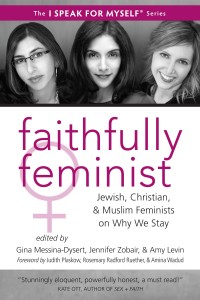As an American Muslimah who graduated from an American university in 2004, I was very interested to read Shabana Mir’s new book Muslim American Women on Campus: Undergraduate Social Life and Identity, to see how her conclusions lined up with my experiences. In this book, Mir looks at how Muslim women students forge their social and religious identities on campus. In doing so, she touches on three main themes (which we can agree could be the great unifiers of any college experience): clothing, booze and dating, all things that many American Muslimahs have had to make their own peace with either directly (do we hijab, do we have sex) or indirectly (do we hang out with people who drink). Mir explores how “being Muslim” (or how individuals choose to live their Islam) does not always intersect cleanly with campus life, and how young women have to navigate their paths in constructing hybrid identities.
![[Source].](https://wp-media.patheos.com/blogs/sites/92/2014/09/muslim-american-women-192x300.jpg)
While my university campus was quite different in its demographics and location – I went to the much more rural University of Mississippi – the Muslimahs in her book all faced the same issues I had as an undergraduate and dealt with these issues in a myriad of ways I could relate to. In fact, I had always thought that there was no typical “American Muslimah” experience. And there isn’t, but there are commonalities. The diversity of testimonials in this book was very comforting to me. I know how it feels – as do a lot of women – to figure out how I feel about hijab, being the token Muslim, or having to choose between hanging out with friends who are drinking or not hanging out at all (why wouldn’t you get coffee with me, college friends?) I also watched my friends play the game at Ole Miss – it was a delicate dance, post 9/11, to be true to oneself and one’s beliefs while at the same time blending in.
In fact, the sections on drinking resonated with me the most. Being at a “Southeastern Conference” school known for its sports and tailgating, reconciling the predominant “drinking culture” on campus with me wanting to be Muslim was a source of internal conflict for me. It comforted me, reading the narratives in Dr. Mir’s book, to know that it wasn’t “just a convert thing.” While my university campus was much less diverse than either Georgetown or GW, not to mention rural, my struggles to find my place were similar to those of the ladies in the book. I identified the most with Fatimah’s story on pages 87-88. As Dr. Mir, notes, she was “profoundly aware of the social consequences on campus of not drinking,” which was something I too dealt with at Ole Miss. It was hard for me, when I converted, to suddenly go from drinking to not drinking. And I couldn’t help but laugh at her reaction at finding out about another Muslim drinker: “Ok, he drinks, ok he’s another one among so many.” I remember also my best (Muslim) friend’s attitude towards drinking and how she too found her own path within our social group.
As one of the less academic members of the MMW blogging team, one important aspect of this book that I would like to stress, and what I think is the main strength of Dr. Mir’s writing style, is that this book is accessible can be read on many different levels. You can read this as an academic work – her methodology and conclusions are sound – while at the same time the work is accessible as a narrative to the average reader (of which I am a part). You can “casually” read this book thanks to the nuance and dexterity in her writing style. While toeing the line of making sure we understand that American Islam is not a monolith, we can draw conclusions at the same time that are common to many of us. This book both took me back in time to my college days and made me think about the future.
I am looking forward to speaking with Dr. Mir in a coming MMW post about some of the takeaways from this book, and hope in the meantime you all get the chance to read her book. It is available at Amazon and at other booksellers.













